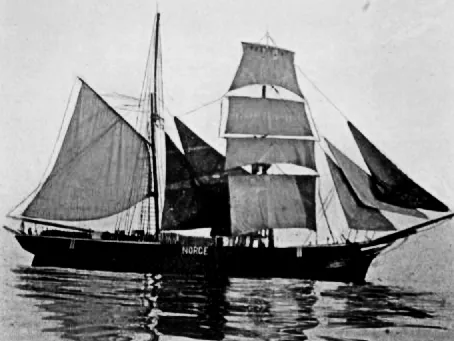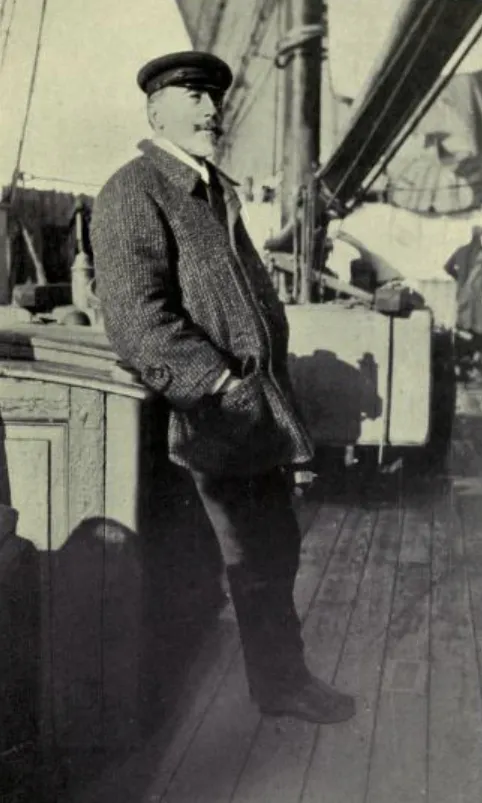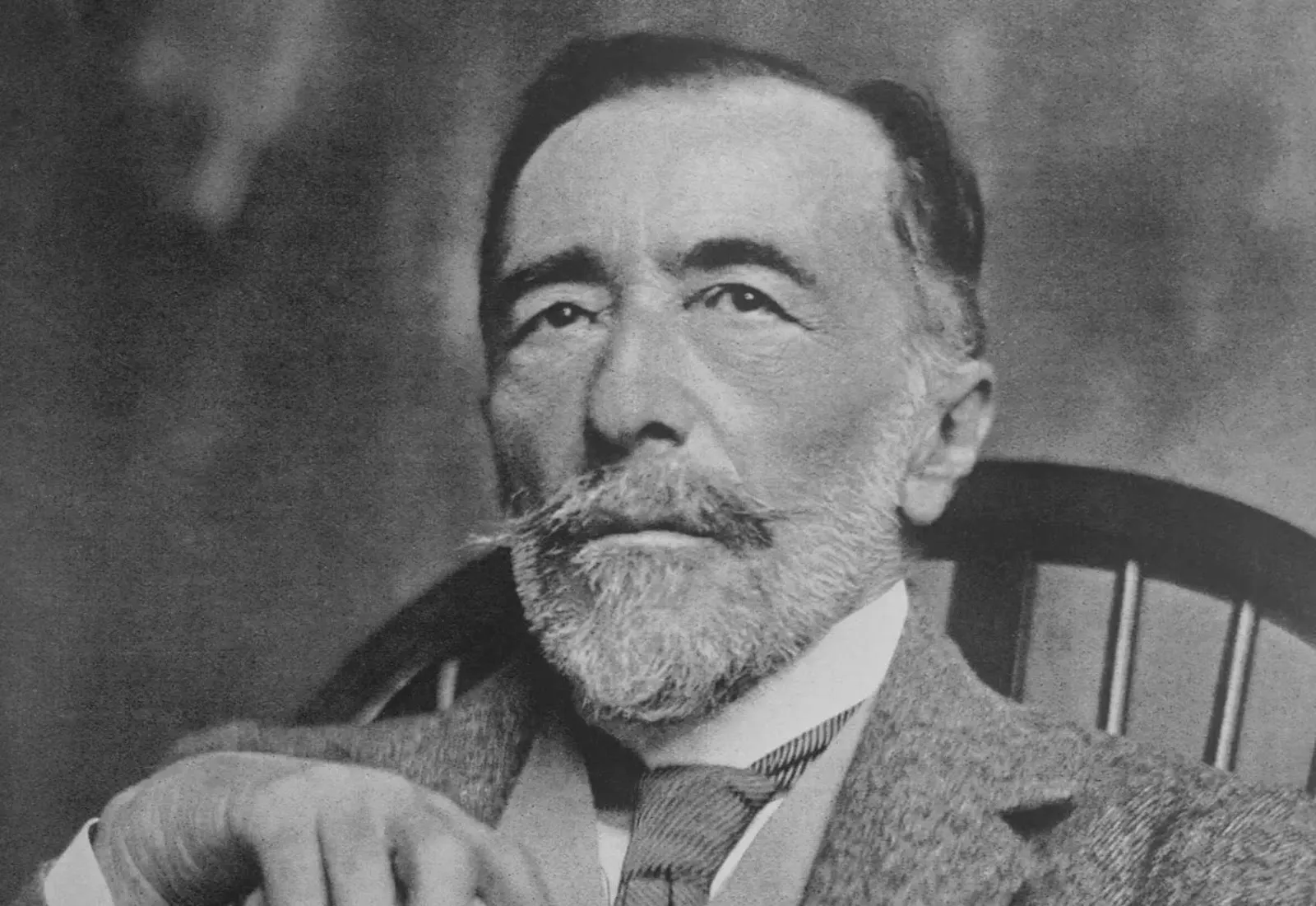The Incredible True Story of Joseph Conrad's WWI Q-Ship Spy Mission
Officially, British Q-Ships didn’t exist. In reality, they were secret killers - heavily armed gunboats disguised as traditional fishing boats, tramp steamers, and luggers - that hunted German submarines.

Joseph Conrad was an author, Master Mariner, and during WWI a British Q-ship co-navigator on a mission to sink German subs. This wasn’t a publicity stunt.
“It was the winter of 1916 and the Kaiser had redoubled his submarine warfare,” Royal Navy Captain J.G. Sutherland recalls in At Sea With Joseph Conrad (1922). "Ships were being sunk right and left.”
In the early years of WWI, Britain lost hundreds of thousands of tons of shipping each month - shipping that included the raw materials for the war effort and food needed to keep Britain from starving.
Sutherland commanded the H.M. Brigantine Ready, the first sailing ship commissioned for active service in the Great War. Ready covertly sailed under a neutral Norwegian flag and was loaded with guns, torpedoes, and indicator nets for trapping enemy submarines that might be foolish enough to enter British harbors. Conrad used his contact to wrangle a tour of Ready and his eyes widened as Sutherland shared the mission details. "A Brigantine at war!" Conrad marveled.
Not only that, Ready was 70 years old, falling to pieces, leaking like a sieve, and was being patched up in a dry dock at Dundee. Conrad wasn’t put off. The author had worked as a merchant marine for many years and volunteered to join the crew of the Ready on a two-month mission hunting German subs in the North Sea.

Joseph Conrad, merchant mariner
Conrad, born in 1857 to parents of the Polish noble class, had taken to the high seas at the age of 16 on a voyage aboard a steamer bound for the West Indies. As a sailor in the French merchant navy, he was liable to conscription when he came of age, so Conrad signed on in 1878 as a deckhand on a British freighter bound for Constantinople.

He’d spend 16 years in the British merchant navy and become fluent in English, using his sea-faring experiences as the backdrop for his bestselling novels Heart of Darkness (1899), Lord Jim (1900), and Typhoon (1902) before turning his hand to writing espionage thrillers The Secret Agent (1907) and Under Western Eyes (1911).
With the onset of WWI, Britain deployed Q-Ships - the letter Q chosen because of their base at Queenstown, in Ireland - which were gunboats disguised as merchant ships. Their job was to lure enemy submarines into making surface attacks and sink the U-boats before the Germans knew what hit them.
"The brand new social experience where you activate your gaming skills as you train like a spy."
- TimeOut
Take on thrilling, high-energy espionage challenges across different game zones.

Conrad’s secret mission
The Royal Navy was happy for Conrad to have a tour of the ship but getting permission to sail required cutting through considerable red tape. Everyone - including Conrad - knew the risks. He might be taken prisoner - or worse. Conrad accepted his fate and understood the rules. Sutherland recalled them as follows:
Ready’s crew needed to bring any enemy submarines within hitting distance before they could open fire. No wireless could be used until the action started. Motors would not be run until the vessel was in action. No Morse code signaling would be used in replying to challenges as that wasn't customary in a small sailing craft. They would be on board for two months in the North Sea in October-November 1916 when conditions were guaranteed to be freezing cold and miserable.
Conrad said he wouldn’t miss the adventure for the world.

Conrad’s high seas adventure
Within a few days, Conrad learned the names and occupations of everyone on board, including the wireless operator who was, in civilian life, a bank clerk. Conrad passed his downtime - like most of the crew - swapping sea stories, playing cards, reading, and waiting for action. With a lucky upper bunk, Conrad read for an hour or two each evening by the paraffin lamp hung on a nail. He'd brought Hartley Withers' War and Lombard Street for company.
Conrad delighted in putting on his long rubber sea boots each morning before stepping onto the wet deck. He was armed with a quick-firing Gardner gun which he regularly checked to ensure the seawater had not rusted the parts. The only hour crew members had to themselves was a bucket of hot water provided by the cook and exclusive use of the cabin.
Conrad had already passed his Master certificate as a mariner so he spent some of his spare time learning the wireless instruments and Morse code.
Minesweeping duty
After one evening card game, Conrad confided that he'd also been to sea in a British minesweeper based out of Yarmouth, England and was impressed with the deadly dull routine of minesweeping combined with the knowledge that the crew might be blown up at any minute.
Laughing, Conrad recalled telling his wife that he intended to sweep mines. She replied: "Don't catch cold."

Conrad and Sutherland would go for walks on board Ready, trading stories and keeping their eyes peeled for German subs. "Not one word did he ever express regret at having come, was always breezy and cheerful, and prayed only that we should have the luck to get into action," Sutherland wrote.
"He once told me he felt more at home with seamen than with men in any other walk of life. He liked their conversation, their ideas, their broad outlook, and their views of life generally. They were, above all things, companionable, and their cherry optimism was a delight to him."
A submarine at last
Finally, at 8 am a few days before their two-month tour was coming to an end, an object was observed on the starboard bow. A submarine, at last.
Alas… the vessel was British. "The feeling of utter depression was indescribable. I have never seen such looks of disappointment on the men's faces," Sutherland said.
With only eight hours of light each day, the crew knew their chances were limited but held out hope they’d see action on their first tour. The crew spotted a second British sub, then one more off their starboard bow. "Before we could get near enough, even to make out her nationality, a cloud of smoke appeared from the entrance to the Humber, out of which emerged four destroyers, steaming at top speed in the submarine's direction, [that] forced her to submerge, and she was lost to us,” Sutherland wrote.
With the tour at an end, Sutherland and Conrad parted ways with warm words. Sutherland would be back on the high seas soon but Conrad had completed his mission. Five years later, they met again at Conrad’s invitation. The author asked about the crew, having remembered all of their names. After lunch at Conrad’s home, he showed Sutherland around his garden, which Conrad had named his ‘Quarterdeck’. After tea, they said goodbye.
"What I felt on leaving was that I had been 'at sea with Mr. Conrad' and 'at home with Mr. Conrad' - two great privileges,” Sutherland wrote. “But what was to me, greater than all, was that I had made a friend of Mr. Conrad.”
In an introduction to Sutherland’s book, published in 2022, Conrad expressed surprise but no objection to Sutherland revealing details of his voyage with Conrad during WWI: “I certainly never imagined that any account of that cruise would come before the public." Conrad wrote, but he didn't reveal his own thoughts about the mission. "What this experience meant to me in its outward sensations and deeper feelings must remain in my private possession.”

SPYSCAPE+

Join now to get True Spies episodes early and ad-free every week, plus subscriber-only Debriefs and Q&As to bring you closer to your favorite spies and stories from the show. You’ll also get our exclusive series The Razumov Files and The Great James Bond Car Robbery!


Gadgets & Gifts
Explore a world of secrets together. Navigate through interactive exhibits and missions to discover your spy roles.
Your Spy Skills
We all have valuable spy skills - your mission is to discover yours. See if you have what it takes to be a secret agent, with our authentic spy skills evaluation* developed by a former Head of Training at British Intelligence. It's FREE so share & compare with friends now!
* Find more information about the scientific methods behind the evaluation here.


Stay Connected
Follow us for the latest
TIKTOK
INSTAGRAM
X
FACEBOOK
YOUTUBE